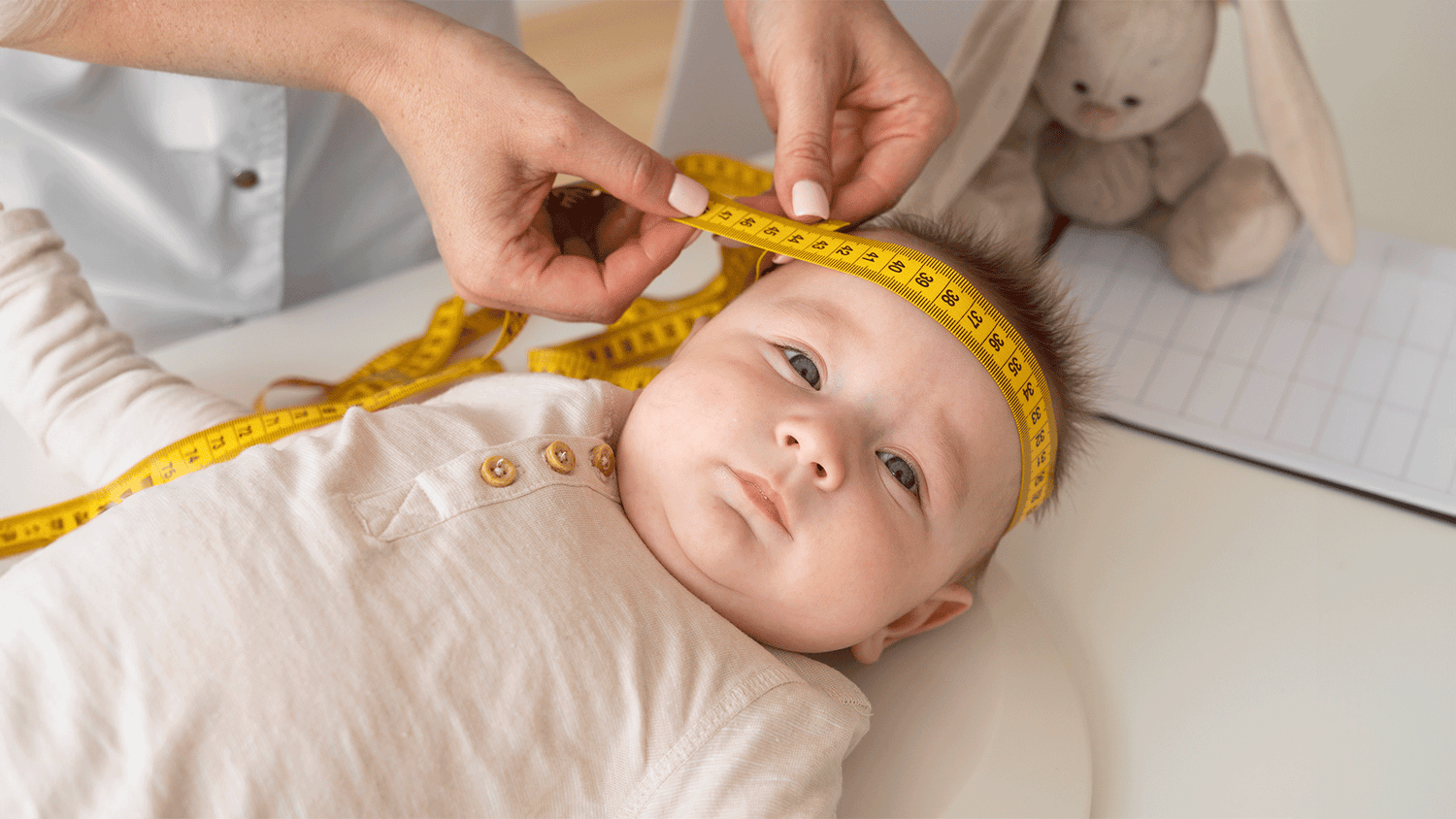
5 Must-Know Benefits Of Using A Baby Carrier


Rs. 2,000.00

Rs. 2,000.00

Rs. 2,100.00

Rs. 1,890.00

Rs. 2,340.00

Rs. 2,505.00

Rs. 1,740.00
As a new parent, you’re probably already tracking your sleep and googling every little change in your child. Most parents keep a close eye on their baby’s weight and height, but head circumference often gets overlooked. It’s just as important because it helps track healthy brain growth. That’s why the newborn head circumference chart is so useful. It’s a simple tool that makes it easier to see how your baby grows and develops.
Head circumference is exactly what it sounds like, it's the measurement around your baby's head, from the forehead to the back.
In your baby’s first two years, the paediatrician will regularly check head size and for good reason. It’s not just about numbers; head circumference helps track brain growth and overall development. If the size is much larger or smaller than expected, it could signal a health concern. So yes, those quick measurements really do matter!
All you need is a soft non-stretch measuring tape and a calm baby (we know, that's the tricky part).
Here's how:
Now, compare your result with a newborn head circumference chart to see where your baby stands.
Every baby is unique, but there are general ranges for baby head size based on age and gender. At birth, most full-term newborns have a head circumference of about 34 to 35 cm. By 1 month, this typically increases to around 36.5 to 37 cm.
At 3 months, many babies will measure about 39 to 41 cm, and by 6 months, the range often lands between 42 and 43.5 cm. As babies approach their first birthday, head size usually grows to about 45 to 46.5 cm. By the age of 2 years, most toddlers have a head circumference of around 48 to 49.5 cm.
Boys often have slightly larger head sizes than girls. More importantly, doctors use head circumference charts to ensure your baby’s growth stays on a healthy track.
So, what causes differences in baby head size? Here are some common (and mostly normal) factors:
If your baby’s head grows too quickly, too slowly, or shows a sudden change on the growth chart, it may be a sign of a health concern. But don't panic. Many times, it's just a natural variation.
Here's when you should reach out to your paediatrician:
Regular checkups using the newborn head circumference chart help catch these things early.
Also Read: Baby Growth Chart for a Parent
These terms can sound scary, but understanding them helps.

In both cases, doctors will usually run additional tests only if other symptoms or concerns are present. Many babies with these conditions grow and develop normally with regular follow-ups.
Yes, those soft spots on your baby's head are completely normal—and important! They allow your baby's skull to grow with the brain. These are called fontanelles. The one at the back of the head usually closes by 2 months, and the one at the top closes by 18 months. If a soft spot appears sunken (dehydration) or bulging (possible pressure), it's worth calling the doctor. But otherwise, these spots are just part of natural baby head size development.
You don't need to do anything fancy. Just the basics go a long way:
Tracking your baby's head size can feel like one more thing to worry about—but it really is just a helpful guide, not a test. Use the Baby Growth Calculator and the newborn head circumference chart to spot growth trends, not to compare your baby to others.
As long as your little one is eating well, hitting milestones, and growing steadily, you're on the right track. And remember—there's no such thing as a "perfect" head size. Just a perfectly loved baby.

